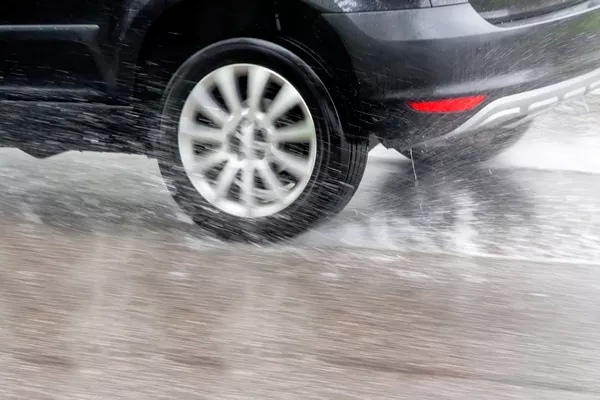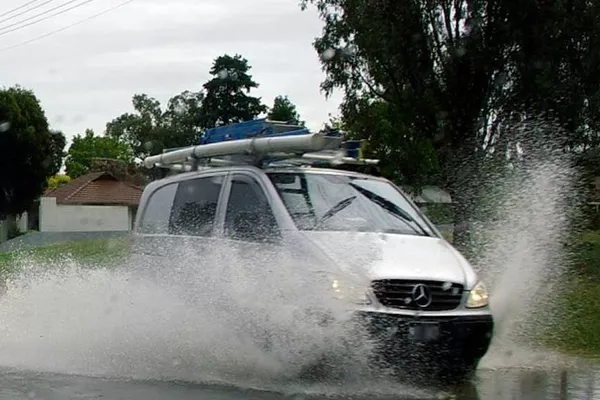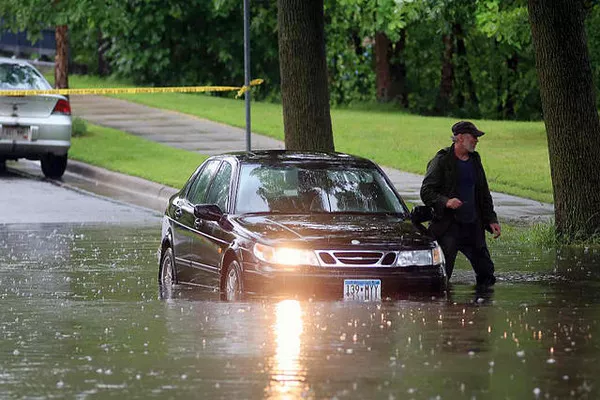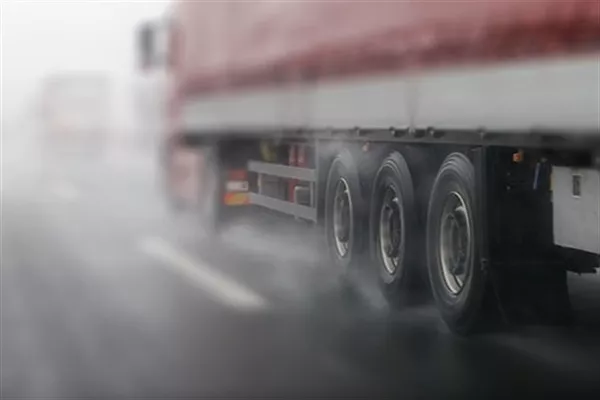If you think driving in the Philippines is already daunting, getting behind the wheel can get extra challenging and dangerous when it’s raining. Heavy rainfall can result in slick driving conditions, apart from compromising forward visibility. You’ll need to adjust your usual driving style in such situations, doubling down on caution and common sense.
Wet weather conditions are associated with an increased risk of accidents. No matter where you are in the world, you’ll need to drive your car in the rain at some point. Having the right knowledge on dealing with reduced visibility and how wet roads affect your driving style can help you drive safely.
Philkotse.com has prepared some helpful tips on how to handle your car in heavy rain:
1. Slow down
Slowing down is one of the safest things you can do when driving in a heavy downpour. Only drive at the speed you’re most comfortable with, taking into account prevailing road and weather conditions. Reducing your speed gives you ample time to react, in case you encounter a large puddle or another vehicle loses control.

Slowing down is one of the safest things you can do when driving in a heavy downpour
2. Beware of hydroplaning
Hydroplaning happens when your car glides or travels on top of the water and has very little or no contact with the ground. If this occurs, you will experience significantly reduced traction.
If car hydroplane happens, remain calm, ease your foot off the gas pedal and keep the wheels straight until the vehicle regains traction. Step on the brakes only when necessary and in a gradual manner.

Hydroplaning compromises your traction
2. Do not use cruise control
Using cruise control during heavy rains is not advised; the system is programmed to maintain your current speed, something that you don’t want to happen when you’re hydroplaning as it increases your risk of losing control.
>>> Very important: Dos and Don'ts you must know when using cruise control.
3. Grip the steering wheel using both hands
Use both of your hands when driving, especially during heavy rains; this will give you better grip and control over the vehicle. Put down anything that may cause distractions such as food, drinks, and your mobile phone.
4. Take note of slippery roads
Even with dry weather, the roads can still get slick with grease and engine oil leaking from dilapidated vehicles. Combined with water when it rains, this makes it even more dangerous as the oil isn’t washed away, aside from being difficult to spot on wet roads.
>>> Check out the tips on how to safely drive on slippery roads.
5. Avoid driving straight through large puddles
If you see a large puddle, you might want to drive around it; it’s pretty hard to tell the depth of the puddle just by looking at it. As much as possible, don’t risk driving through it, or you might end up splashing water into the car’s electricals. Worse, it might turn out to conceal a deep pothole that you won’t be able to get out of.
6. Avoid crossing through running water
Crossing through running water is also a bad idea; the water could be moving with more force than you expected or it could be deeper than you think. There’s a high risk of your car getting swept away by the current.

It’s pretty hard to tell the depth of the puddle just by looking at it
7. Avoid road edges
Some roads are made a little higher in the middle, sloping off towards the sides to let rainwater runoff. Consequently, this translates to puddles on the edges of the road that you will need to avoid. Keep to the middle lane to be safe.
8. Check the brakes
Your car’s brakes use friction to slow down, and driving through floods or large puddles gets your brakes wet, reducing their effectiveness. Lightly tapping the brake pedals will help dry the brake rotors. Also, avoid driving too fast or tailgating other vehicles.
>>> Read more: 6 signs showing that your car's brake system needs maintenance.
9. Press the brake earlier and with less pressure
Pressing the brake pedal earlier than you would normally do in dry weather; this also provides an advance warning to the driver behind you. In rainy weather, it’s best to maintain at least 3 seconds of stopping distance between you and the vehicle in front of you.
10. Allow for extra travel time
Bad weather is also a bad time to be in a rush. If anything, you’ll need to drive slower since everyone else will be doing the same anyway. The best thing to do is to plan ahead, anticipating delays especially if you know you’ll be passing through problem areas. Don’t forget to check the weather updates for indications of heavy rainfall during your trip.

Crossing through running water is definitely a bad idea
11. Turn on headlights
Turning on your headlights (and foglights, where applicable) during rainy weather increases your visibility to other road users. Avoid using high beams as they only cause the light to bounce off the rain droplets, dazzling other drivers.
Sometimes, you might find it difficult seeing ahead even with the lights on, because of fog buildup on your windshield blocking your view. When this happens, set your car’s air-conditioning to remove the condensation on the glass, as well as turning on the rear glass defogger.
12. Keep away from buses and trucks
Large vehicles such as trucks and buses create a spray from their tires during heavy rains, making driving extremely difficult because the spray can block your vision. As much as possible, try to avoid passing big trucks and buses, but if it is really necessary, pass by them as quickly and as safely as you can.

As much as possible, try to avoid passing big trucks and buses
13. Stop and pull over if visibility is near zero
Too much heavy rain often causes zero visibility. This will make it hard for drivers to safely see anything on the road. In that case, you’ll have to look for a safe spot then pull over. Wait for the weather to improve before you resume driving.
Do not activate your hazard lights while the car is moving, as there is no way for you to signal a turn, which will confuse other motorists and potentially cause an accident. Turn on your blinkers only when your car is incapacitated in the middle of the road, to signify to other motorists that you present a hazard.
14. Prepare an emergency kit
You’ll need to anticipate the worst in foul weather. Pack an emergency kit with essentials, such as flashlights, food, water, and medicine; this allows you to be considered prepared for anything untoward that might happen.
Recent posts
- Prepare your ride for rainy season: 6 common car problems & tips to avoid Aug 16, 2022
- Rainy Days and Car Paint: Good or Bad? Aug 25, 2018
- 6 tips to preserve car battery during rainy season in the Philippines Nov 02, 2017
- How to drive safely in heavy rain: 5 essential tips Dec 05, 2017
- Tips to protect your car in summer and rainy days May 23, 2017












